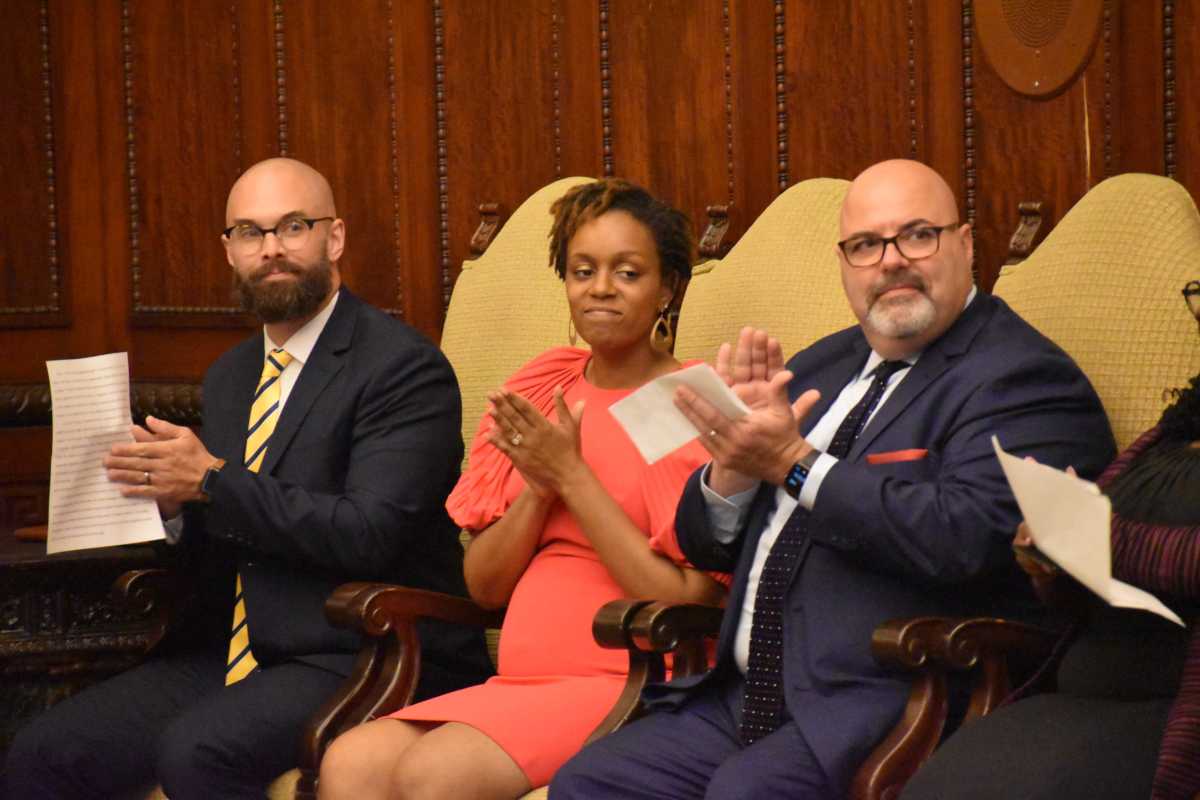Three Philadelphia public schools will get additional funding to provide outreach and programming for families through a soda tax-funded initiative.
Frankford High School, Add B. Anderson School in the Cobbs Creek section of West Philadelphia and Paul L. Dunbar School, near Temple University in North Philadelphia, will now be Community Schools, city leaders announced Tuesday.
As part of the program, each school will get a coordinator to oversee services; enhanced support for students struggling with attendance; and year-round activities for the neighborhood.
Including the recent additions, there are 20 Community Schools, and the program is flexible enough that administrators can cater the extra funding depending on the needs of the community, officials said.
Michael Calderone, Frankford’s principal, said he plans to keep the school’s hulking Oxford Avenue building open later to provide a safe place for families.
“Gun violence affects us almost daily, either through victimization or indirectly through the trauma it so often forces upon our students and families,” Calderone said.
At Anderson, a K-8 school, principal Laurena Zeller said she wants to introduce new art and STEM programs for students.
“When we were doing this application, one of the things that I did was send out a survey to my staff,” she said. “One of the things that resonated throughout was just additional opportunities.”
Mayor Jim Kenney’s administration prioritized the 19143, 19122 and 19124 zip codes during the application process, and eight schools sent in submissions.
“Having served as a principal three times, I would have loved to have had the opportunity to be selected as a Community School,” said Tony Watlington Sr., who took over as School District of Philadelphia superintendent last week.

Before his recent appointment, Watlington spent his educational career in North Carolina. As he entered a reception room in City Hall for the Community Schools event, he gazed up at portraits of former Philadelphia mayors.
Watlington is planning a listening tour with more than 80 sessions during his first 100 days as superintendent, according to a plan released by the district last Thursday.
The Community Schools program stems from the beverage tax, which was approved six years ago and applies a 1.5 cent levy on every ounce of soda and other sugary drinks.
Kenney’s administration debuted nine Community Schools in 2017, the first year of the initiative, after studying other cities that had implemented similar programs.
“It seemed like it was like yesterday, we were in Cincinnati,” City Council President Darrell Clarke said at Tuesday’s news conference, turning to face Kenney.
“We went to Cincinnati because we had heard about this notion of Community Schools, and it made all the sense in the world,” he added. “When we went to that school, we saw how that was the focal point of the neighborhood.”

Funding for Community Schools is set to increase by about $1.3 million, to $11.18 million, in the next fiscal year, which begins in July, a spokesperson for the Mayor’s Office told Metro.
Four percent of all revenue generated by the soda tax since its inception has been allocated to Community Schools, according to the City Controller’s Office.
Money from the tax, which usually goes into the city’s general fund, is also spent on free pre-k and significant renovations to recreation centers, libraries and other public facilities.























